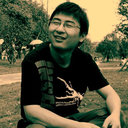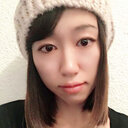Treating angina pectoris by acupuncture therapy.
Anahtar kelimeler
Öz
Acupuncture therapy on PC 6 (Neiguan) has a therapeutic effect on cardiac and chest ailments including angina pectoris. Additional beneficial acupuncture points are PC 4 (Ximen), HT 7 (Shenmen point), PC 7 (Daling point), PC 5 (Jianshi point), PC 3 (Quze point), CV 17 (Danzhong point), CV 6 (Qihai point), BL 15 (Xinshu point), L 20 (Pishu point), BL 17 (Geshu point), BL23 (Shenshu point), BL18 (Ganshu point), HT 5 (Tongli point), and ST36 (Zusanli point). Acupuncture not only quickly relieve the symptoms of acute angina pectoris, but also improve nitroglycerine's therapeutic effects. Therefore, it is an efficient simple therapeutic method used for emergency and for regular angina treatment. Review of studies on acupuncture therapy has shown effectiveness were between 80% to 96.2% that are almost as effective as conventional drug regimen. When compared with conventional medical treatment, the acupuncture therapy shows the obvious advantage of lacking, adverse side effects commonly associated with the Western anti-anginal drugs such as 1) Nitroglycerine (headache--63% with nitroglycerine patch and 50% with spray; syncope--4%; and dizziness--8% with patch; hypotension--4% with patch; and increased angina 2% with patch). 2) Isosorbide mononitrate (dizziness--3 to 5%; nausea/vomiting--2 to 4% and other reactions including hypotension, and syncope even with small doses). 3) Propranolol (bradycardia, chest pain, hypotension, worsening of AV conduction disturbance, Raynaud's syndrome, mental depression, hyperglycemia, etc.). Many conventional anti-anginal medications cause inter-drug reactions with other medications the patients taking for other diseases. Whereas, acupuncture therapy does not pose such an interference with patient's medications. Nevertheless, surgery is still the treatment of choice when acupuncture or conventional drug therapy fails. Combination of conventional drug therapy and acupuncture would considerably decrease the frequency and the required dosage of drug taking, thereby decreasing the unpleasant side effects of the drug therapy.





